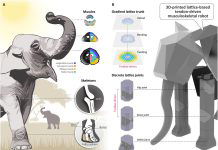
Have you ever tried to imagine what it would be like to actually feel the splash of water while playing a video game or using virtual reality (VR)?
Scientists from Tohoku University in Japan have made a big leap toward making that happen!
They’ve figured out a way to simulate how water flows in real life, including how it moves when you touch or disturb it.
Their findings were published in a scientific journal, and they could revolutionize the world of virtual reality.
How Did They Do It?
Understanding how water moves in real life is old news; scientists figured that out 200 years ago.
But making a computer understand and show that movement, especially when something like a hand or an object changes the water’s flow, is a tough challenge.
To tackle this problem, the team used a smart approach combining real-world measurements and computer learning.
They used special floating markers—called “buoys”—to measure how water moves. These buoys had magnets inside them, which helped track their movement with a magnetic system. But that’s just the first step.
Computer Learning Makes the Difference
The real magic happens inside the computer. The scientists used something called “deep reinforcement learning” to teach the computer how to make virtual water act like real water.
This type of learning is a bit like teaching a dog new tricks.
The computer tries something, gets feedback (like a reward or punishment), and then tries to do better next time. Over time, the computer got really good at mimicking how water flows in real life, especially when it’s disturbed by something like a hand.
Before this research, other methods used cameras to watch particles in water to understand its flow. But those methods had problems.
What if the water was too murky to see through? Or what if the water was in a container you couldn’t see inside? This new method overcomes those challenges because it doesn’t rely on cameras but uses magnetic tracking and computer learning instead.
Virtual Reality Gets Real
So why is this exciting?
This new technology can make virtual reality feel even more real! Imagine playing a game where you can control water and actually feel its movement.
Or think about talking to someone far away over the internet, and both of you can experience the same flowing water at the same time. Yoshifumi Kitamura, one of the lead researchers, is enthusiastic about the possibilities.
He says this could make VR games way more exciting and could also help people feel closer when they’re talking online.
In a nutshell, this technology is all about making virtual water feel like real water. It opens the door for amazing new experiences in gaming and online communication. It’s like bringing a whole new layer of reality into the virtual world.
Follow us on Twitter for more articles about this topic.
Source: Tohoku University.



